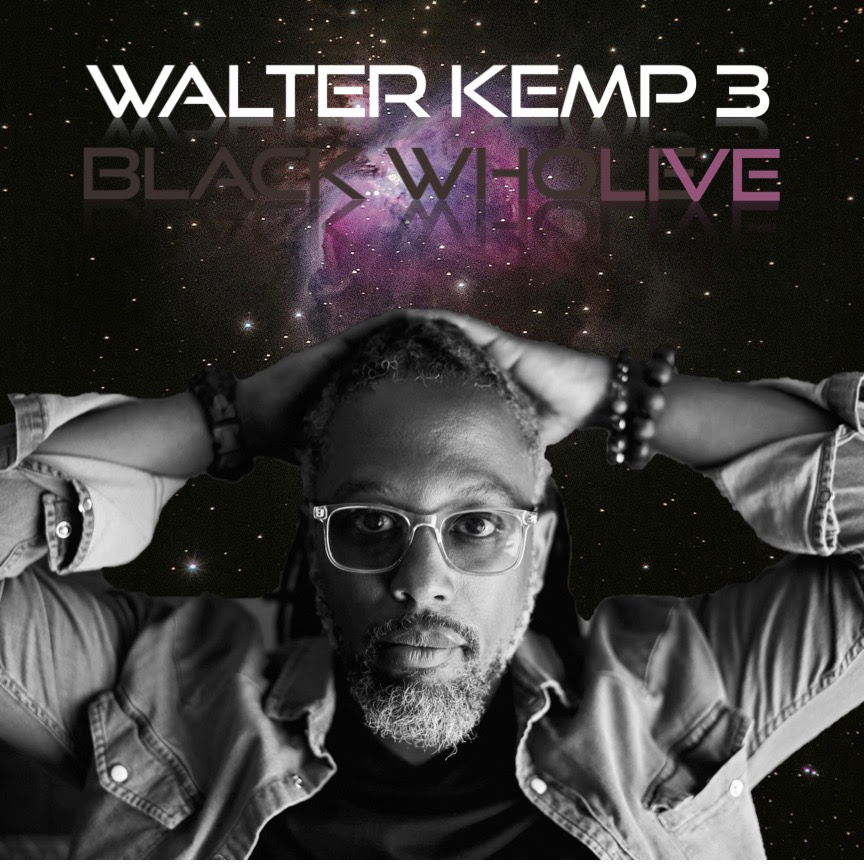Happy new year from TRoS! I’d like to start the year off with gratitude: I received a lot of positive feedback for my “year in review” post. Thank you very much for reading, sharing, and supporting both the site and the musicians I write about here. The inspiration behind this blog is to amplify musicians’ perspectives and their new music as it comes out — at a pace that’s sometimes difficult to keep up with. I’ve started to research upcoming releases instead of just listing the ones that I’m sent directly; there’s a running list here (and a link to past years as well). Trying to include more music meant I discovered some artists for the first time and definitely heard some excellent music that I would have otherwise missed!
This month featured a lot of strong releases to start the year, including some that I’m pretty sure I’ll be listening to for at least the rest of 2024. In the list below there are quite a few albums that might be characterized as “out.” Use this as an opportunity to stretch your ears a bit as a warm-up for a year when thoughtful listening will continue to be an essential life skill.
This is quite a long list, and there are more records worth checking out, so be sure to look over the entire list of releases. In the spirit of starting the year with open ears, everyone should listen to the new Surya Botofasina record. Those looking for an extra dose of the B3 organ should look up guitarist Dave Stryker’s new album. If you’re from the Philly area — or an Eagles fan — be sure to check out the Hiruy Tirfe album (which might be the most Philly of all the Philly records ever). And, if you’re wondering where Jon Irabagon’s new releases are in this list, just know that I’m interviewing him next week for a separate piece.
As always, feel free to share your favorites from this month in the comments below and if there’s an upcoming release that you’d like me to feature, you can reach out here.
Thanks for reading!
The Month in Review – January 2024
Tim Berne and Sunny Five. Candid (Intakt), released January 19th.
Besides Berne on alto saxophone, the rest of Sunny Five is: Marc Ducret (Vendramini Guitars and Table Guitar), Devin Hoff (Electric Bass), Ches Smith (Drums, Electronics), and David Torn (Electric Guitar and Live Multi-Looping). Candid is a perfect example of how superb musicianship knows no genre. Handwringing over what subgenre of “jazz” this is — or whether it’s “jazz” at all — totally misses the point. The record lingers at the intersections of electronic and acoustic sound: motives interwoven, timbres fused, and parts exchanged, all patched together with attentive listening and constant invention. Candid will take listeners on a whimsical adventure that will make their skin crawl and then soothe their souls.
Gerald Cannon, Live at Dizzy’s Club. The Music of Elvin & McCoy (Woodneck), released January 19th.
Cannon’s highly anticipated Live at Dizzy’s Club is definitive. This is the music of past masters played by the ones living among us now, tending the flame in the truest sense. A stellar horn line of Eddie Henderson (trumpet), Sherman Irby (alto saxophone), Joe Lovano (tenor saxophone), and Steve Turre (trombone) is supported by a rhythm section of Cannon, pianist Dave Kikoski, and drummer Lenny White. This is the music that Dizzy’s was built for — hard-driving post-bop dressed in its New York-finest — and it’s clear that the audibly engaged live audience left as happy customers. Of the many moments worth highlighting, Steve Turre is a notable stand-out in this performance; he sounds in top form with several energetic and technically impressive improvisations in the set.
Daniel Carter & Playfield, Magic Heart (577), released January 19th.
Carter’s Playfield project is new to me. For a collective built around outdoor performance and environmental sound, a studio recording like this offers a fresh perspective on how to incorporate “extramusical” sound. The result is cinematic, intentional, and inspired, with carefully curated and produced sounds augmenting an instrumental ensemble that plays with noise, groove, and intensity. I loved this record in part because it commanded my attention; I keep coming back to it. It’s cacophonous, joyful, and, like the Berne record, an adventure at every turn.
Vanisha Gould & Chris McCarthy, Life’s a Gig (Fresh Sounds New Talent), released January 12th.
Gould was another new discovery for me this month. Her understated virtuosity had me hanging on her every note: a lot of these songs are performed in fairly standard ways, which primed my ears for Gould’s smallest, interpretative variations. As a duo record, the album comes across as intimate and subdued; and pianist McCarthy is a solid accompanist. Still, I found myself wanting for more. This version of “What a Little Moonlight Can Do” delivers on the intensity and drive that’s only implied on the album’s version. (Still when one might expect Gould to break out into a burning scat solo in this setting, she stays focused on lyric interpretation and melodic variation.) I’m here for all Gould’s choices, though. Hopefully we won’t have to wait too long for the full-band record.
Mary Halvorson, Cloudward (Nonesuch), released January 19th.
This was another highly anticipated release for January 2024. As stellar as the whole band was on Myra Melford’s recent release, for me it was Halvorson who really captured my attention. What a joy to hear her own band playing her compositions on this Nonesuch release. The band is Halvorson’s Amaryllis ensemble, featuring (among others) trumpeter Adam O’Farrill, trombonist Jacob Garchik, and vibraphonist Patricia Barber. I didn’t get a press release for this record and the bandcamp page is pretty sparse, so there’s not much background information I can share; the music most definitely speaks for itself, though. I’m going to take my time with this record: it rewards with each repeated listen.
Keyon Harrold, Foreverland (Concord), released on January 19th.
Since that December 2020 press conference when he spoke up and played out for his son and against yet another act of senseless injustice, I listen to Keyon Harrold differently. Using his art and trumpet to manifest a more just, equitable, and free world, on Foreverland Harrold continues the urgent work of laying out a pathway forward for uplift and “peace beyond understanding.” An album that draws equally on hip hop and R&B as it does jazz, Foreverland features guest appearances by Common, PJ Morton, Robert Glasper, Laura Mvula, and Malaya. The top-rate playing (and post-production) by an impressive cast all work to amplify the messages and vibrations of the project, meant in the truest sense of insistent, Earth-bound, Afrofuturist righteousness to transport those who are moved to listen to a place of “peace where we’re reborn.”
Abdullah Ibrahim, 3 (Gearbox), released on January 26th.
This new album by renowned South African musical pioneer and pianist Abdullah Ibrahim includes a mix of studio and live tracks (from a July 2023 performance at Barbican Hall in London) and features Cleave Guyton Jr. (on flute and piccolo) and Noah Jackson (double bass and cello). A massive 3-LP release, the album includes 21 tracks including two extended piano improvisations by Ibrahim, original compositions, and several classic tunes (by Coltrane, Ellington, and Monk). Of all the music, the trio (and especially Guyton’s playing) stands out as particularly noteworthy in this release.
Press materials describe Kemp 3 and his band as “cosmic freewheeling.” Absolutely. This is joyous, high-vibration music, feeding off a live audience and a commitment to collective uplift. Group improvisation, propulsive grooves, and bop-inflected energies are combined in a cauldron of acoustic, electronic, and exclamatory timbres. This record is a lot of fun, but at the same time it’s evident that there are a higher calling and purpose to Kemp’s music, which is simultaneously deeply rooted and transcendent. (Since the record is live, we’re provided audible evidence of Kemp’s capacity for elevating his audiences’ states of mind and body.) Yet another listening journey I was happy to take over and over again this month.
Orlando Madrid, From this Moment Forward (OM), released January 12th.
From this Moment Forward is saxophonist Orlando Madrid’s debut recording. Trumpeter Mike Rodriguez joins him and a 4-person rhythm section for an album inspired by Wayne Shorter, one of Madrid’s main influences. The tracks on the album — and the range of styles on it — reflect Madrid’s early career, from his start in New Mexico to his studies at Eastman and NYU, and his current home in New York City. (The Latin-forward “Más sangre!” stands out as an album highlight, for Madrid’s playing, composition, and arranging skills.) This is a solid release from a dedicated musician, who like so many, is working hard to carve out his own path. This debut should propel him forward.
Ulysses Owens Jr. and Generation Y, A New Beat (Cellar Music), released January 19th.
Some records have me hooked within the first minute or so. Honestly it only took a few bars of A New Beat to convince me that this album would very probably end up in my 2024 “year in review” post. Everything about this recording is masterful and joyous. The collective music-making is high-energy and top notch, but Owens provides plenty of opportunities for an ensemble full of rising stars to shine individually. I’ve never heard saxophonist Sarah Hanrahan sound better than she does here: her expressive range coupled with exemplary technical facility and total command of bebop language raises the bar for the whole ensemble. Her playing is reason alone to buy this album, but she’s merely one of a stellar cast of younger players Owens has assembled for this date, bringing some of his best students from the classroom to the recording studio. School field trips never sounded so good.
Reggie Quinerly, The Thousandth Scholar (Redefinition), released January 19th.
The press release for this record mentions that the album comes from Quinerly’s exploration of Afro-Cuban jazz, adding that the legendary Inventions and Dimensions by Herbie Hancock served as an inspiration. Like the Hancock record, The Thousandth Scholar eschews cliché, bombast, and mimicry in favor of a thoughtful synthesis that’s more reflective of Quinerly’s perspective on how Afro-Cuban traditions integrate into his artistic vision. There’s no shortage of energy, excellent playing, and even some of the timbres and musical forms one might normally associate with Afro-Cuban jazz. However, what comes across most is the balance that Quinerly achieves among all the traditions he invokes, supported by an ensemble of bandmates (pianist Manuel Valera, bassist Matt Brewer, and percussionist Samuel Torres) who are first-call players on “straight-ahead” and Latin jazz dates.
Reverso, Shooting Star — Étoile filante, self-released January 19th.
Reverso is a collaborative project featuring US trombonist Ryan Keberle and two French musicians, pianist Frank Woeste and cellist Vincent Courtois. Shooting Star — Étoile filante, an homage to the French composer Lili Boulanger, was my introduction to the project, but the group has several albums out already, all of which celebrate “the music of Les Six, a group of early 20th Century French composers whose members included Darius Milhaud, Francis Poulenc, Arthur Honneger, and the sole female member of the group, Germaine Tailleferre.” The work on Shooting Star, resulting from extensive research, arrangement, and (re)composition, showcases Boulanger as a lesser known and less prolific composer but no less worthy of veneration. It’s hard to point to exactly what makes this album so excellent: the ensemble blend, the inventive arranging and composition, the individual moments of stunning artistry, and/or the range of timbres and moods evoked from just three musicians. (I am also an unabashed fan of Keberle’s — all of his projects, all of his playing, and his instrumental sound which may be my favorite of any jazz trombonist today.) The thought and labor that these musicians invested in celebrating Boulanger has transformed into a transcendent recording, rich in detail and wonderfully satisfying.
On the surprising and eclectic The Hidden World of Piloo Ada Rovatti sets the table for an endlessly entertaining party. Like any good host she’s invited a bunch of friends committed to making sure everyone has a great time. Musically the album traverses funk, pop, Latin styles, all tied together through Rovatti’s compositions, solid playing from the instrumentalists (including guitarist Tom Guarna) and an international and genre-bending array of vocalists, including Kurt Elling and Fay Claassen. Jazz traditionalists may not choose this record as their favorite of the month, but that would be like ignoring an invitation to a party you know is going to be a blast. Don’t miss out on this album.
Marlon Simon and the Nagual Spirits, On Different Paths (Truth Revolution), released on January 26th.
Compositionally rich and funded in part by Simon’s Guggenheim fellowship, On Different Paths represents a further refining of his Nagual Spirits project. The individual tracks and the album as a whole reflect Simon’s thoughtful consideration of his personal and professional lives. This is honest music, performed expertly and representing a composer’s singular vision realized through an ensemble of top-rate New York-based musicians. As with prior projects, Simon draws on his Venezuelan heritage, while also incorporating elements of bebop, Afro-Cuban and Latin jazz, and through composition.
Benjamin Vergara and Amanda Irrarrázabal, último sosiego (577), released January 4th.
This record was the biggest surprise of the month. The Brooklyn-based 577 Records consistently releases excellent recordings that might be characterized as on the more adventurous end of “jazz” … or maybe just past it. “Último sosiego” translates as “ultimate calm” (or also “last peace”) and the liner notes describe the music as “a silent eruption of a volcano.” This duo record features two Chilean musicians, trumpeter Benjamin Vergara and bassist Amanda Irrarrázabal, and is intended to evoke “Chile’s extreme southern territory and soundscape.” As an ethnomusicologist whose research relates to sound ecology in another secluded corner of the world (the Canary Islands), the album’s concept intrigues me. As a player, I was constantly impressed by the musicians’ capacities for evincing such a wide — and at times jarring — range of timbres and effects from their instruments. As a listener, I was happily carried away in the ethereal, sonic strangeness inspired by these extreme landscapes. When you listen to this record, remember to breathe deeply — maybe close your eyes — and just be still. Beauty emerges.


